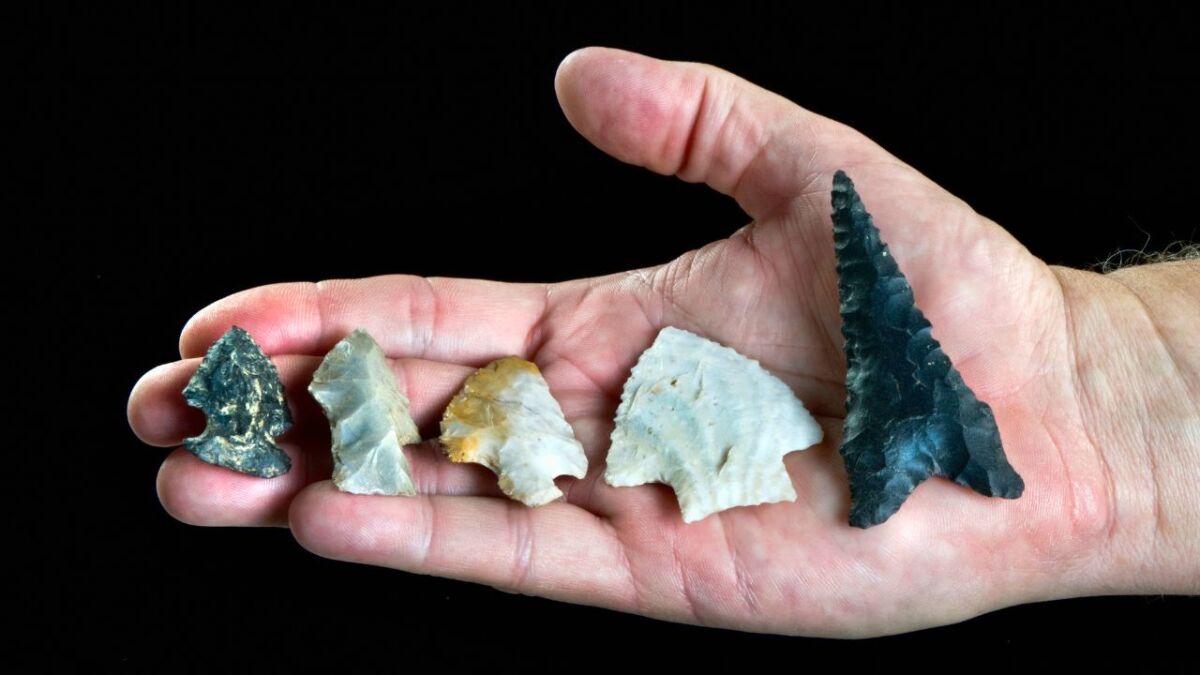
flint
Nomen
Meaning
Flint is a type of hard, sedimentary rock that has been used for centuries as a tool for starting fires. In the context of survival, bushcraft, and outdoor activities, flint is an essential item for creating sparks and igniting tinder. Its relevance in the outdoor world lies in its ability to provide a reliable and primitive method of fire-making, even in challenging conditions. With a sharp edge, flint can also be used for crafting tools and weapons, making it a versatile resource in the wilderness. Understanding how to use flint effectively is a fundamental skill for anyone venturing into the great outdoors.

Examples
„I love using flint to start a fire in the wilderness. It's reliable and sparks easily when struck against steel.“
„During our survival training, we learned how to knap flint into sharp arrowheads for hunting.“
„Flint is a versatile tool in bushcraft. I use it to create sparks for fire, as well as to shape and sharpen other tools.“
„When I go camping, I always carry a piece of flint in my backpack. It's a lightweight and essential item for any outdoor enthusiast.“
„Flint is a natural resource that has been used by humans for thousands of years. Its durability and ability to create fire make it invaluable in survival situations.“
Origin
The word "flint" originates from the Old English word "flint" or "flint-stan", which is derived from the Proto-Germanic word "flintaz". It is believed to have its roots in the Proto-Indo-European word "plei-", meaning "to flow" or "to float".
Flint is a type of sedimentary rock composed mainly of microcrystalline quartz. It is known for its hardness and ability to produce sparks when struck against steel. This unique property made flint an essential tool for early humans, who used it to create fire and fashion various tools and weapons.
Throughout history, flint has been widely used by different cultures around the world. It played a crucial role in the development of early human civilizations, enabling the creation of fire for warmth, cooking, and protection. Flint was also used to make arrowheads, spearheads, knives, and other cutting tools.
In modern times, flint is still valued for its fire-starting capabilities and is often used in survival situations. It has also become a popular material for making primitive tools and for practicing bushcraft and wilderness skills.
Historical and cultural importance
Flint is a word that holds significant historical and cultural relevance. It refers to a type of hard, sedimentary rock that was widely used by our ancestors for various purposes. In ancient times, flint was highly valued for its ability to produce sparks when struck against steel, making it an essential tool for starting fires. This discovery revolutionized human civilization, as it provided a reliable and portable source of heat and light.
Flint also played a crucial role in the development of early weaponry. The sharp edges of flint stones were used to create primitive cutting tools, such as knives and arrowheads. These tools were essential for hunting, gathering, and self-defense, allowing our ancestors to survive and thrive in challenging environments.
Furthermore, flint holds cultural significance in many indigenous communities around the world. It is often associated with traditional fire-making techniques and is considered a symbol of resilience, resourcefulness, and connection to nature. The art of flint knapping, the process of shaping flint into tools, has been passed down through generations, preserving ancient skills and knowledge.
Today, flint continues to be used in various fields, including archaeology, geology, and outdoor survival. Its unique properties make it a valuable material for creating fire starters, striking tools, and even modern-day flintlock firearms. Understanding the historical and cultural significance of flint helps us appreciate its importance in human history and its continued relevance in our lives.
More information about the term flint
What is Flint?
Flint is a type of sedimentary rock that is commonly used in bushcraft and survival activities. It is known for its ability to produce sparks when struck against a hard surface, making it an essential tool for starting fires in the wilderness.
Properties of Flint
Flint is a hard, dense rock that is typically gray or black in color. It is composed mainly of silica, which gives it its unique properties. One of the most important characteristics of flint is its ability to fracture in a conchoidal manner, meaning it breaks into sharp, curved pieces with smooth edges. This makes it ideal for creating cutting tools and striking surfaces for fire-making.
Uses of Flint in Survival Situations
When it comes to survival, flint is a versatile and invaluable resource. Here are some of its main uses:
Fire Starting: Flint is commonly used in conjunction with a piece of steel or another hard material to create sparks. By striking the flint against the steel at the right angle, you can generate sparks that can ignite tinder, such as char cloth or dry grass, and start a fire.
Tool Making: Flint is also used to create cutting tools, such as knives, arrowheads, and scrapers. Its hardness and ability to fracture in a controlled manner make it an excellent material for shaping and sharpening these tools.
Signaling: In emergency situations, flint can be used to create bright sparks that can be seen from a distance, helping rescuers locate your position.
Wilderness Navigation: Flint can be used to create a makeshift compass needle by magnetizing a piece of steel and floating it on water. This can help you determine the direction of north and navigate through unfamiliar terrain.
Where to Find Flint
Flint can be found in various parts of the world, including Europe, North America, and Asia. It is often found in sedimentary rocks, such as chalk or limestone. Look for areas where these rocks are exposed, such as cliffs, riverbeds, or quarries.
Conclusion
Flint is a valuable tool in the world of bushcraft and survival. Its ability to produce sparks and its versatility in tool making make it an essential resource for anyone venturing into the wilderness. Knowing how to find and use flint can greatly enhance your survival skills and increase your chances of thriving in the great outdoors.
Back to overview

